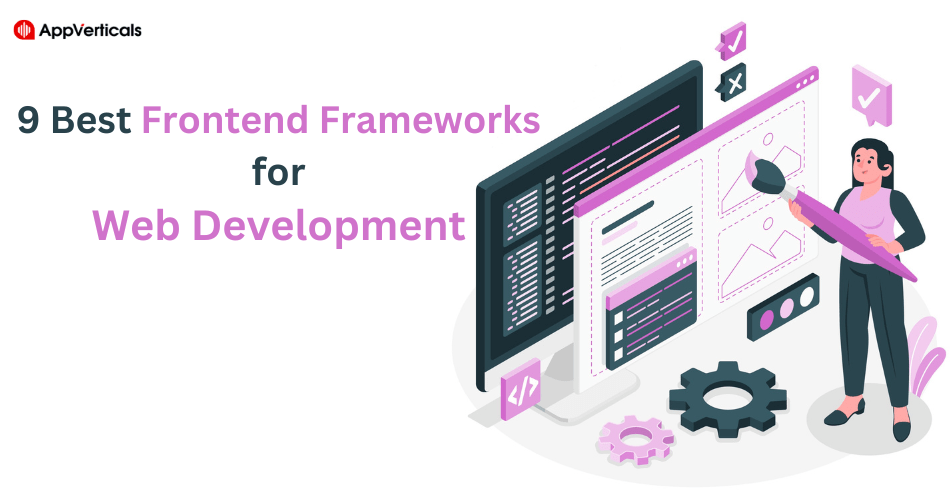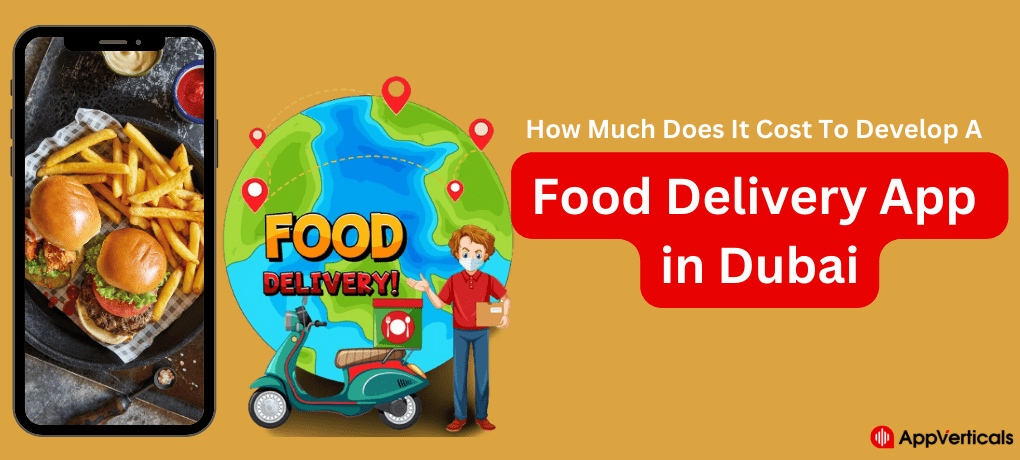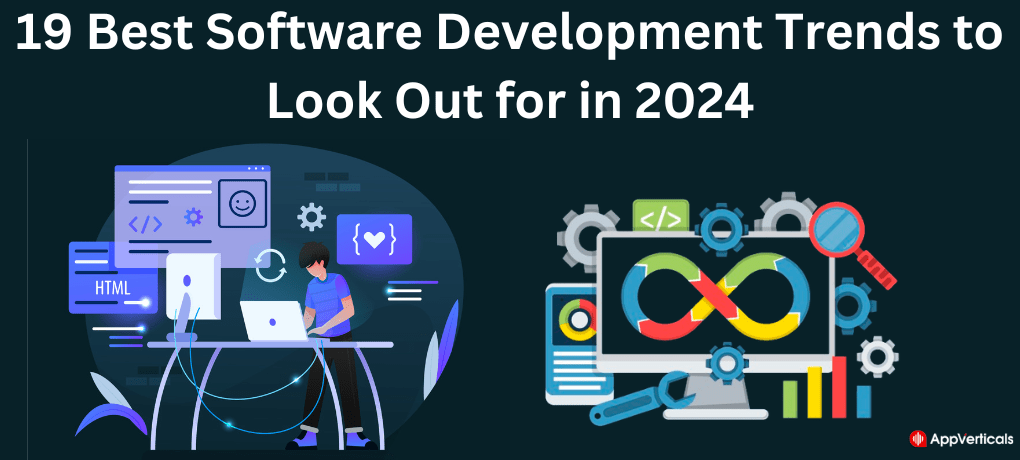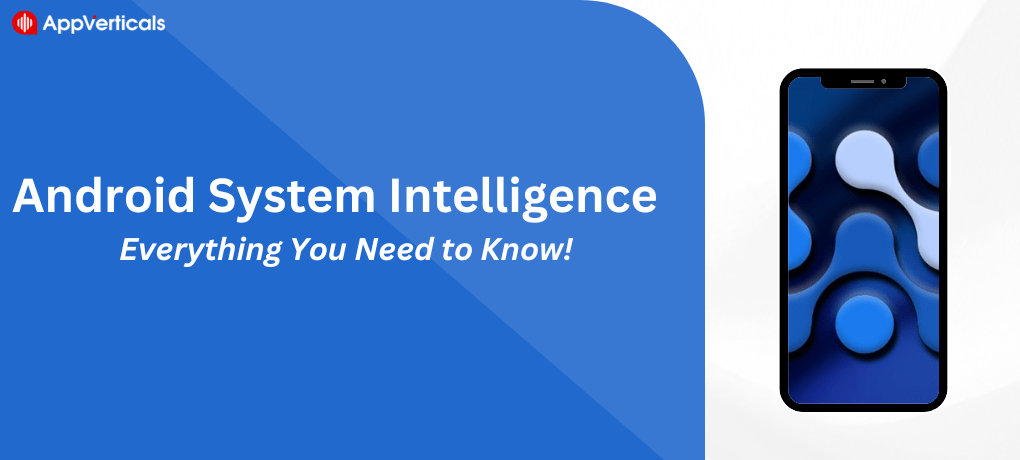Need help with the best frontend frameworks? Don’t worry! This article will guide you through everything you need to work on frontend frameworks.
You’ve got the perfect products, a catchy brand name, and the drive to succeed. But there’s one tiny hurdle – building the actual website. Ugh, code, right? Don’t worry, you’re not alone. That’s where frontend frameworks and the best frontend development company swoop in to save the day, acting like your personal web development cheat code.
Frontend Frameworks: Building Websites at Lightning Speed
As per Forbes, 71% of firms have a website in 2023, with online transactions accounting for 28% of total business activities.
Frontend frameworks work the same way for websites. They provide pre-built components like buttons, menus, and product listings, allowing you to focus on the unique design and functionality of your online store instead of sweating over the nitty-gritty details of code.
So, what exactly is a frontend framework?
It is a pre-assembled toolbox filled with everything you need to build the front-facing part of a website – the bits users see and interact with. These frameworks come with pre-written code snippets and tools that make crafting beautiful, interactive elements a breeze.
Why Use a Frontend Framework? Buckle Up for Benefits!
Using a framework is like having a superhero sidekick for your web development projects. Here’s why they’re awesome:
- Speed Demon: Frameworks eliminate the need to build everything from scratch, saving you tons of time and effort. Think of it as the difference between hand-knitting a sweater and grabbing one off the shelf – much faster, right?
- Quality Control: Just like having a building code ensures safe houses, frameworks enforce coding best practices. This means your website will be well-structured, reliable, and less prone to errors – kind of like having a blueprint for success.
- Dream Team Power: Popular frameworks have massive communities of developers constantly creating new tools and features.
- Learning on Autopilot: Many popular frameworks use similar coding styles. By mastering one, you’ll pick up others much faster, making you a more versatile web whiz.
Real-World Examples: Websites Built with Framework Muscle
Ever browsed through the sleek design of Netflix or the user-friendly interface of Airbnb? Those stunning websites were likely built with the help of frontend frameworks.
Here are some other popular examples:
- Facebook (React): Connect with friends and family on this social media giant, which is powered by the powerful React framework.
- Instagram (React): Share your best pics on this photo-sharing app, built with the same React magic.
- Spotify (Angular): Stream your favorite tunes on this music platform, which is architected with a robust Angular framework.
What Developers Face Without Frameworks?
Building a website from scratch is possible but incredibly time-consuming and frustrating. Here are some challenges developers face without frameworks:
- Repetitive Coding: Imagine writing the same paragraph over and over – that’s what building common website elements can feel like without frameworks.
- Bug Bonanza: The more code you write, the higher the chance of errors creeping in. Frameworks help minimize these bugs by providing pre-tested and reliable components.
- Keeping Up with the Trends: Frameworks help you stay ahead of the curve by offering trendy and user-friendly features and functionalities.
Should You Use a Framework? Take the Quiz!
Not every project needs a framework. Here’s a quick quiz to help you decide:
- Is your website a simple brochure or a complex online store?
- Do you have a team of experienced developers?
- How important is staying up-to-date with the latest trends?
If you answered “yes” to most of these questions, then a framework might be your perfect web development partner!
Frontend Frameworks Are Powerful Tools, But They’re Just One Piece of the Puzzle.
AppVerticals is your one-stop shop for all your web development needs. Our team has the skills and experience to bring your web app vision to life.
Let’s discuss your project today!How Do Frontend Frameworks Work?
These are like pre-built toolkits that help developers create amazing user interfaces (UI) much faster and easier.
But how exactly do they work?
Buckle up because we’re about to peek under the hood and unravel the secrets of frontend frameworks.
Key Components of a Frontend Framework
The frontend framework is a toolbox with special compartments. Each compartment holds a powerful tool that tackles specific tasks in building a website.
Here are a few key components:
- MVC Pattern (Model-View-Controller): This is a popular design pattern that many frameworks use. Imagine it like separating your website into three parts: the Model holds your data (like product information in an ecommerce store), the View is what users see on the screen (product listings, descriptions, etc.), and the Controller handles the communication between them (updating the view when the data changes). This clean separation makes code more organized and easier to manage.
- Data Binding: Whenever you update the data (like adding an item to the shopping cart), the framework automatically updates the view to reflect those changes. No more manually writing tons of code to refresh the screen – it happens like magic!
- Routing: Routing helps the framework figure out which page to display based on the user’s actions (clicking a link or entering a URL).
Choosing the Best Framework for Web Development: Making the Perfect Match!
Choosing a frontend framework for your ecommerce store is similar. It’s about finding the perfect match for your project’s needs.
Key Factors to Consider: Finding Your Framework Soulmate
Here are the main ingredients to stir into your decision-making pot:
- Project Size and Complexity: Building a small lemonade stand website is different from creating a full-blown Amazon competitor.
- Team Expertise: Does your team have rockstar developers who can conquer any framework? Or are you a solopreneur just starting? Consider your team’s experience and comfort level. Frameworks like React or Angular have steeper learning curves, while Vue.js is known for being beginner-friendly.
The best framework for web development depends on your specific project requirements and your team’s capabilities.
- For a complex ecommerce store, a framework like React might be a good choice. It’s like having a giant toolbox with all the tools you need to create a dynamic and interactive shopping experience, from product filtering to personalized recommendations.
Also read: AR in retail boosts shopping experiences
Here are some additional tips for making your decision:
- Research popular frameworks and their communities.
- Don’t be afraid to experiment!
- Focus on long-term maintainability.
Choosing the right framework is crucial for the success of ecommerce store. By carefully considering your project’s needs and your team’s skills, you can find the perfect match that empowers you to build a fantastic online shopping experience for your customers.
Best Frontend Frameworks: The Interactive Powerhouses
These frameworks excel at handling complex interactions and data flow within your store, making features like dynamic product filtering and personalized recommendations a breeze.
Here are the top contenders:
1. React (The Building Block Champion):

React JS, an open-source JavaScript toolkit, is undoubtedly the top framework for frontend web development, used by 40.58 percent of professionals.
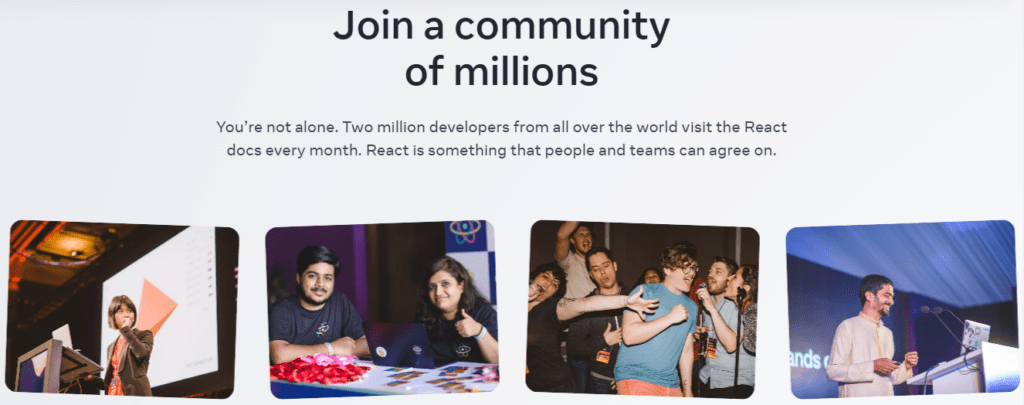
React JS provides reusable components that you can snap together to create any interface you can dream up. This flexibility makes it a great choice for stores that need a lot of customization and interactivity.
Pros:
- Extremely flexible and customizable
- Large community and plenty of learning resources
- Great for building complex and dynamic interfaces
Cons:
- Steeper learning curve compared to some frameworks
- Requires additional libraries for features like routing and state management
Real-Life Example: Facebook! Yes, the massive social media platform uses React to power its dynamic and ever-changing news feed.
Code Example (React – Displaying a Product with Reviews):

This example shows how React handles data (reviews) and updates the UI dynamically.
2. Angular (The Structured Powerhouse):

Angular is a more opinionated framework than React. Interest in Angular has developed tremendously over the previous 5+ years.
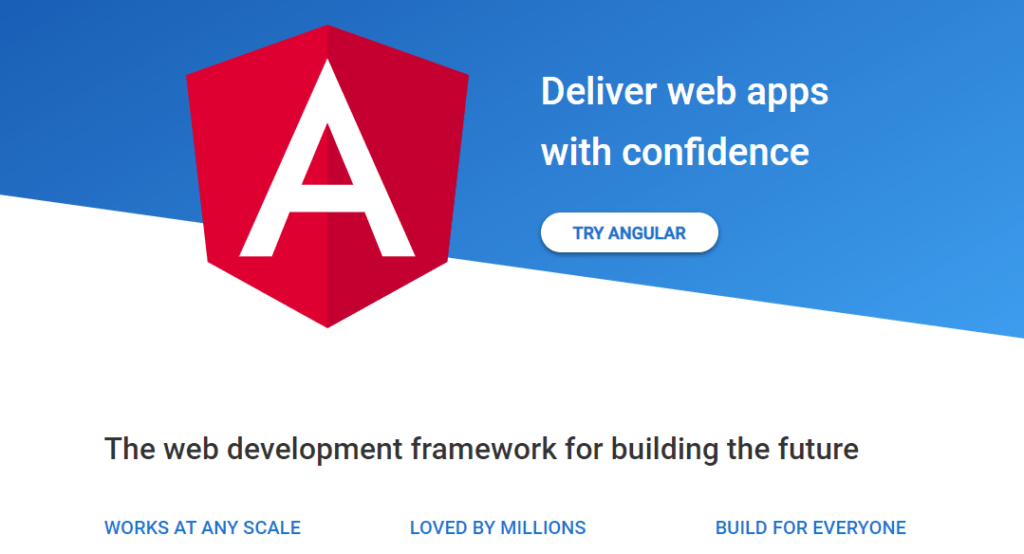
Angular provides a clear path for building complex applications with built-in features like routing and dependency injection. This structure makes it a good choice for large-scale ecommerce stores that require a lot of organization and a clear development process.
Pros:
- Well-structured and opinionated framework
- Built-in features for routing, state management, and more
- Large community and extensive documentation
Cons:
- It is less flexible than React and can feel restrictive for some developers
- A steeper learning curve due to its comprehensive nature
Real-Life Example: Forbes! The popular business news website uses Angular to deliver a dynamic and data-driven user experience.
Code Example (Angular – Product Search):

This example shows how Angular interacts with an API to fetch product search results.
3. Vue.js (The Gentle Giant):

There are about 1.7 million live websites developed using Vue globally. Vue.js is a sweet spot between React’s flexibility and Angular’s structure.

It’s known for its ease of use and gentle learning curve. Vue.js is a great option for smaller ecommerce stores or those that prioritize a fast development process.
Pros:
- Easy to learn and use, perfect for beginners
- Flexible and customizable while offering some structure
- Smaller framework, making it faster to set up
Cons:
- Smaller community compared to React or Angular
- It might not be the best choice for very large and complex applications
Real-Life Example: Upwork! The popular smartphone brand uses Vue.js to power its sleek and user-friendly online store.
Code Example (Vue.js – Adding a Product to Cart):

This example shows how Vue.js components communicate with each other using events and data passing.
4. Svelte (The Compiler Darling):

Svelte is a performance-focused framework that takes a different approach. Unlike React or Vue.js, which update the DOM virtually, Svelte compiles your code into highly optimized JavaScript at build time. This can lead to faster and smoother user experiences.
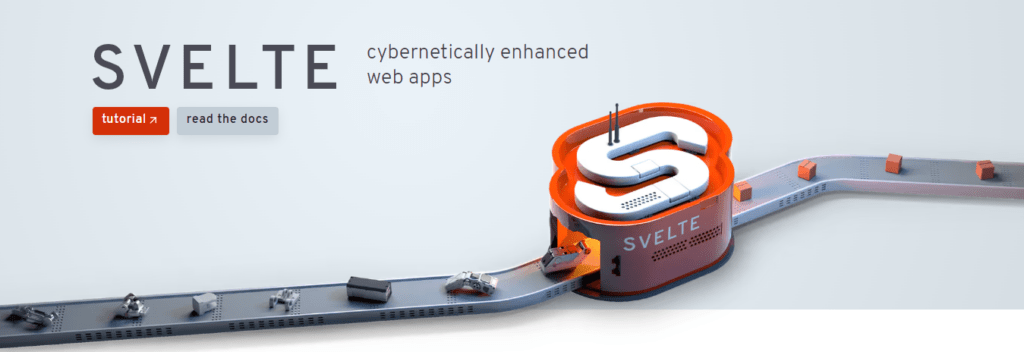
Pros:
- Excellent performance due to ahead-of-time compilation
- Small framework size, leading to faster load times
- Easy to learn with a clean syntax
Cons:
- It is still a relatively new framework with a smaller community
- Limited tooling and ecosystem compared to established frameworks
Real-Life Example: Replit! This online coding platform uses Svelte to deliver a fast and responsive coding experience.
Code Example (Svelte – Simple Counter):

This example shows how Svelte uses reactive variables and updates the UI directly.
5. Preact (The Lightweight Challenger):

Preact is a lightweight alternative to React. It shares a similar component-based approach but with a smaller footprint, making it a good choice for projects where performance and file size are critical.

Pros:
- Extremely lightweight and fast-performing
- Highly compatible with React code, making migration easier
- Good choice for mobile apps and performance-critical projects
Cons:
- Smaller community and ecosystem compared to React
- Limited built-in features compared to other frameworks
Real-Life Example: Uber Eats! The food delivery app uses Preact to ensure a fast and responsive user experience on mobile devices.
Code Example (Preact – Simple Todo List):

This example shows how Preact uses hooks (similar to React) to manage the state and update the UI.
6. Ember.js (The Opinionated Champion):

Ember.js is a full-featured framework with a strong focus on conventions and best practices. It provides a structured approach to building complex web applications with features like routing, data management, and built-in testing tools.

Pros:
- Encourages clean code and a structured development process
- Built-in features for common tasks like routing and data binding
- Good choice for large-scale enterprise applications
Cons:
- Steeper learning curve compared to some frameworks
- It can feel restrictive due to its opinionated nature
- Less popular choice for smaller or simpler projects
Real-Life Example: LinkedIn! The professional networking platform leverages Ember.js to power its dynamic and feature-rich user interface.
Code Example (Ember.js – Simple Route):

This example shows how Ember.js handles routes and interacts with the data store.
7. Backbone.js (The Seasoned Veteran):

Backbone.js is a pioneer in the frontend framework world. While less widely used than newer options, it offers a lightweight approach to building single-page applications (SPAs).
Backbone.js is a good choice for projects that need a solid foundation for user interactions and data management.

Pros:
- Lightweight and flexible framework, easy to integrate with existing code
- Focuses on core functionalities for SPAs
- It is a mature framework with a large community and extensive documentation
Cons:
- Requires more manual setup and configuration compared to some frameworks
- Less suitable for complex and large-scale projects
- It might feel dated compared to newer options
Real-Life Example: SoundCloud! The music streaming platform used Backbone.js in its earlier iterations, and its influence is still present in the core architecture.
Code Example (Backbone.js – Simple Model):

This example shows how Backbone.js defines a basic model for representing product data.
8. Semantic UI (The Descriptive Darling):

Semantic UI is a CSS framework that focuses on readability and ease of use. It employs natural language classes like “UI button” or “UI form” to style your website’s elements. This makes it a great option for beginners or projects that prioritize clean and maintainable code.

Pros:
- Easy to learn and use with its descriptive class names
- Promotes clean and well-documented CSS code
- Offers a wide range of pre-built UI components
Cons:
- This can lead to larger file sizes compared to some minimal CSS frameworks
- Less flexibility compared to writing custom CSS from scratch
- Limited community and resources compared to some popular frameworks
Real-Life Example: Snapchat! The project management software platform utilizes Semantic UI to build user-friendly and intuitive interfaces for its products like Jira and Confluence.
Code Example (Semantic UI – Button):

This example shows how Semantic UI uses descriptive class names to style a button with the primary color scheme.
9. Foundation (The Responsive Rock):

Foundation is a strong and mature CSS framework with a strong focus on responsive design. It provides a collection of pre-built styles and components that adapt seamlessly to any screen size, ensuring your ecommerce store looks great on desktops, tablets, and mobile devices. Search for the best mobile app development company in Dallas to design this framework with care.
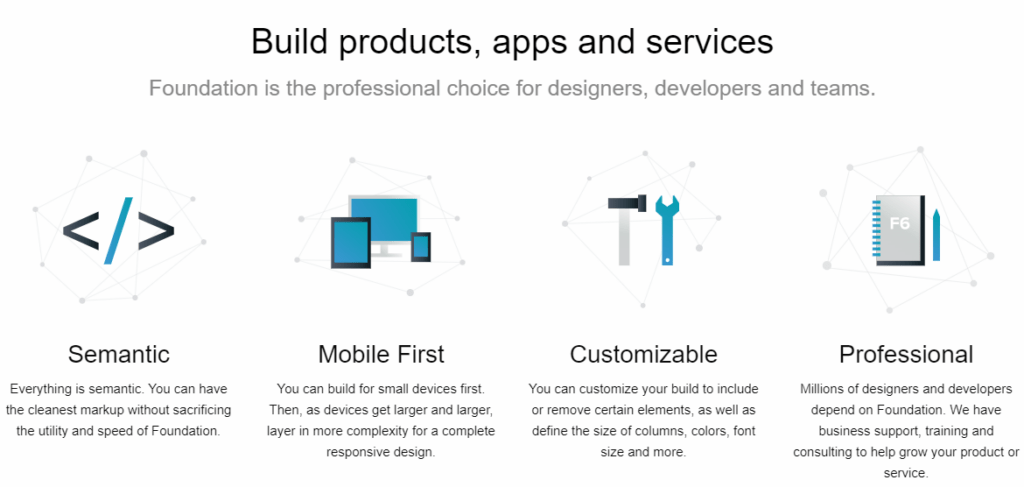
Pros:
- Extensive collection of responsive components for a seamless user experience
- Easy to learn and use, with a focus on clean markup
- Offers both Sass and vanilla CSS versions for customization
Cons:
- This can lead to larger file sizes compared to some minimal CSS frameworks
- It is less popular compared to Bootstrap, leading to a slightly smaller community
Real-Life Example: Evernote! The note-taking app utilizes Foundation to build a responsive and user-friendly interface that works flawlessly across various devices.
Code Example (Foundation – Responsive Grid):

This example shows how the Foundation uses grid classes to define responsive layouts that adapt to different screen sizes.
Building from Scratch vs. Using a Framework: A Tale of Two Approaches
Imagine you’re building a treehouse. You could go all out, chopping wood, hammering nails, and designing everything yourself (building from scratch). Or, you could use a pre-built kit with instructions and ready-made components (using a framework). Here’s a breakdown of both approaches:
Building from Scratch:
- Pros: Gives you ultimate control and flexibility over every aspect of your website.
- Cons: It takes a lot of time and effort, especially for complex websites. Requires a deep understanding of web development concepts. More prone to errors and bugs.
Using a Framework:
- Pros: It saves you tons of development time, cost, and effort. It also makes code more organized and easier to maintain. Large communities and resources are available for help.
- Cons: Might limit your flexibility compared to building from scratch. You have to learn the specific framework you choose.
Choosing the right approach depends on your project’s needs. If you’re building a simple website, you might be fine going it alone. However, for complex ecommerce stores or interactive applications, a framework can be a lifesaver.
AppVerticals Stays at the Forefront of the Latest Trends and Technologies.
Partner with us to ensure your web app is not only functional but innovative and future-proof.
Get a free quote for your web development project!Beyond the Framework: Building for the Future with Agile Development
Frontend frameworks are fantastic tools, but they’re just one piece of the puzzle. You also need a development process that keeps up with your changing needs and customer demands. Enter Agile development – a superhero methodology for building software in a flexible and collaborative way. Let’s see how frontend frameworks and Agile development work together to create a winning team for your online store.
Also read: MVP (minimum viable product) in agile
Frontend Frameworks and Agile
Here’s how frontend frameworks support this agile approach:
Rapid Prototyping:
Frameworks provide pre-built components and styles, allowing you to quickly create basic versions of your website (prototypes) during each sprint. This lets you test core functionalities and user flows with real people early and often.
Example: Using a framework, you can rapidly prototype a basic version with essential features like product listings, payment options, and a confirmation screen. You can then test this prototype with real users to see if it’s clear and easy to use. Based on their feedback, you can refine the design in the next sprint.
Iterative Development:
Agile development is all about making small improvements based on feedback. Frameworks, with their modular components and reusable code, make these changes a breeze. You can easily swap out components, adjust styles, and update functionalities without having to rewrite everything from scratch. Frameworks allow you to easily move the door (component) to the correct location (updating functionality) without rebuilding the entire house (website).
Example: With a framework, you can quickly iterate on the design, adjust the layout, and improve the labeling. This iterative approach ensures your website continues to evolve and meet customer needs.
Keeping Your Code Clean and Readable: It’s Not Magic!
Frameworks offer a lot of power, but with great power comes great responsibility (like any superhero knows!). Here are some tips for maintaining clean and readable code within a framework:
- Follow the framework’s conventions:
- Use clear and descriptive variable names
- Break down complex logic into smaller functions.
- Use comments to explain tricky parts.
Searching for the Best Frontend Development Services? We Can Help!
Building a website can be thrilling! But choosing the right frontend framework can feel like a confusing blindfold test. React? Angular? Vue.js? or more? Don’t sweat it!
AppVerticals is your one-stop shop for top-notch frontend development. We’re a team of experts who can decipher the framework jungle and recommend the best fit for your project. We speak fluent “framework” but translate it into clear, easy-to-understand terms.
Think of your website as a welcoming online mansion. Visitors should be able to explore it effortlessly, not get lost in technical labyrinths. That’s where AppVerticals comes in. We build websites that are not only beautiful but also user-friendly, turning visitors into fans.
Ready to ditch the framework confusion and build a website you love? Let’s chat!
Wrapping Up!
So, you’ve unlocked the magic of frontend frameworks! By now, it’s clear that these tools are like superpowers for web development.
Using a frontend framework is like having a secret weapon in your ecommerce arsenal. It empowers you to build a beautiful, user-friendly, and feature-rich online store that keeps your customers coming back for more.
FAQs
1. What are frontend frameworks?
Frontend frameworks are pre-written code libraries that simplify creating a website’s visual elements and interactive features. They provide a foundation for developers to build user interfaces (UI) faster and more efficiently. To learn more about the best frontend frameworks for web development, read this blog.
2. What are the top front end frameworks?
- React
- Angular
- Vue.js
- Svelte
- Preact
- Ember.js
- Backbone.js
- Semantic UI
- Foundation
For more info about the best frontend frameworks and how they work, read this blog.
3. Is JavaScript a front end framework?
Nope! JavaScript is a programming language that powers interactivity on websites. Frameworks like React use JavaScript as their building block, but they offer additional pre-written code to save development time.
4. Is HTML a front end framework?
HTML is the foundation (think bricks) of a website’s structure and content. Frameworks build upon HTML to add features and style (like windows and doors). They work together to create a complete website.
5. Do I need a large, established framework or a smaller, more flexible one?
Established frameworks like React or Angular are big supermarkets with everything you need. They offer a wide range of features and functionalities, but they might feel overwhelming for small projects. Smaller frameworks like Vue.js or Svelte are like cozy corner stores – they provide the essentials with a simpler learning curve.
6. Am I building a single-page application (SPA) or a complex web portal?
SPAs are websites that load a single page and update content dynamically, like Gmail or Facebook. Complex web portals might have multiple pages with different functionalities. Frameworks like React or Vue.js are popular choices for SPAs, while a framework like Angular might be a better fit for complex web portals due to its structured approach.

